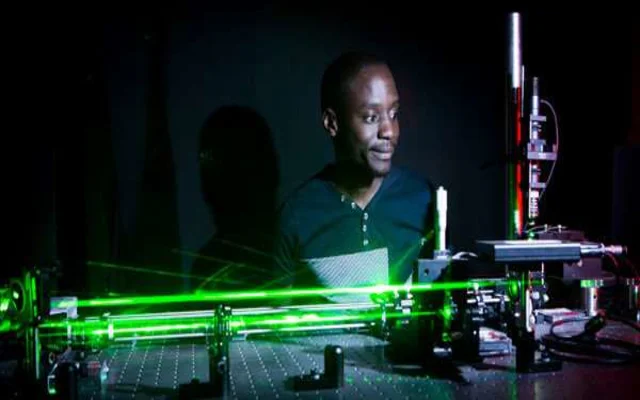5:16 PM Physicists show a fresh device for manipulating and moving tiny objects with light | |
When you light a beam of light on your hand, you experience almost everything except a small amount of heat generated by the beam. When you exude that same light into the world, which is measured at the nano-or micro-level, the light is made a massive inventory of manipulation, which you can apply to the movement of objects around – firmly captured in the light. Scientists from the structured light group from the Witwatersrand Institute of physics secondary schools in Johannesburg, South Africa, have discovered a method to apply an absolute beam of laser light, to keep under control and manipulate small objects, such as single cells in the human body, tiny particles in small-sized chemistry, or to work on future devices on a crystal. But a certain way, called holographic optical capture and tweezers, is not considered fresh, Wits scientists have discovered a method to normally apply the perfect power of light, covering vector light, which was previously out of reach for this application. This creates the first vector holographic trap. "Previously, holographic traps were limited to certain classes of light (scalar light), as a consequence of this is quite curious, in fact, that we can find a holistic device that covers all classes of light, covering the replication of all past capture devices" - Dr. Andrew Forbes, head of the cooperation group and a brilliant doctor At the school of physics, where he heads the laboratory of structured light Wits. "What we have actually created is that we have shown the 1st vector of the holographic optical capture and plucking system. The device permits particles of a specific magnitude by a micrometer, like a bio cell, to be captured and manipulated only with light." The final device has the ability to capture immediately a number of particles and move them only with vector States of light. The experiments for this study were performed by Nkosi Bhebhe as part of his doctoral studies. The work is published in the online journal Nature, scientific reports. In normal optical trapping and pinching systems, the light is focused quite densely into a little that which has fine particles, such as bio cells. At this small scale (usually micro - or nanometers), the forces that light can exert are important, and as a consequence, the particles have every chance of being captured by light and then controlled. As you move the light particles will go with him. This idea has had a Nobel prize for physics 2018 from a South American scientist Arthur Ascina. At first, the light was controlled automatically with the support of steps and mirrors, but later the idea was improved by the method of light movement around the holographic, that is, with the support of computer holograms to control the light without moving parts, which is the most controlling particles. Until now, only special classes of laser beams-scalar-have been able to be used in these holographic traps. In his own note entitled "vector holographic optical trap" scientists Wits have recommended how to make and keep under control every sample of light holographic, and then apply it to the creation of a fresh optical capture device and tweezers. "In particular, the device could work with both classical laser beams (scalar rays), for example, and more complex vector beams. Vector beams are quite important and have found a large number of uses, but so far there has been no ability to make a vector holographic trap," Forbes talks. Scientists Wits show their own fresh trap, holographic controlling as scalar, for example, and vector beams in one device, promoting a progressive position and exposing themselves to fresh instrument society. The group expects that the fresh instrument will become healthy in controlled experiments in the micro-and nano-worlds, covering studies on a single cell in biology and medicine, small-size chemical reactions, fundamental physics and future devices on a crystal. Previously, having shown that it is possible to make hundreds of custom light ornaments from one hologram, the study brings together their previous work on holographic light control using optical capture and tweezers. | |
|
| |
| Total comments: 0 | |
